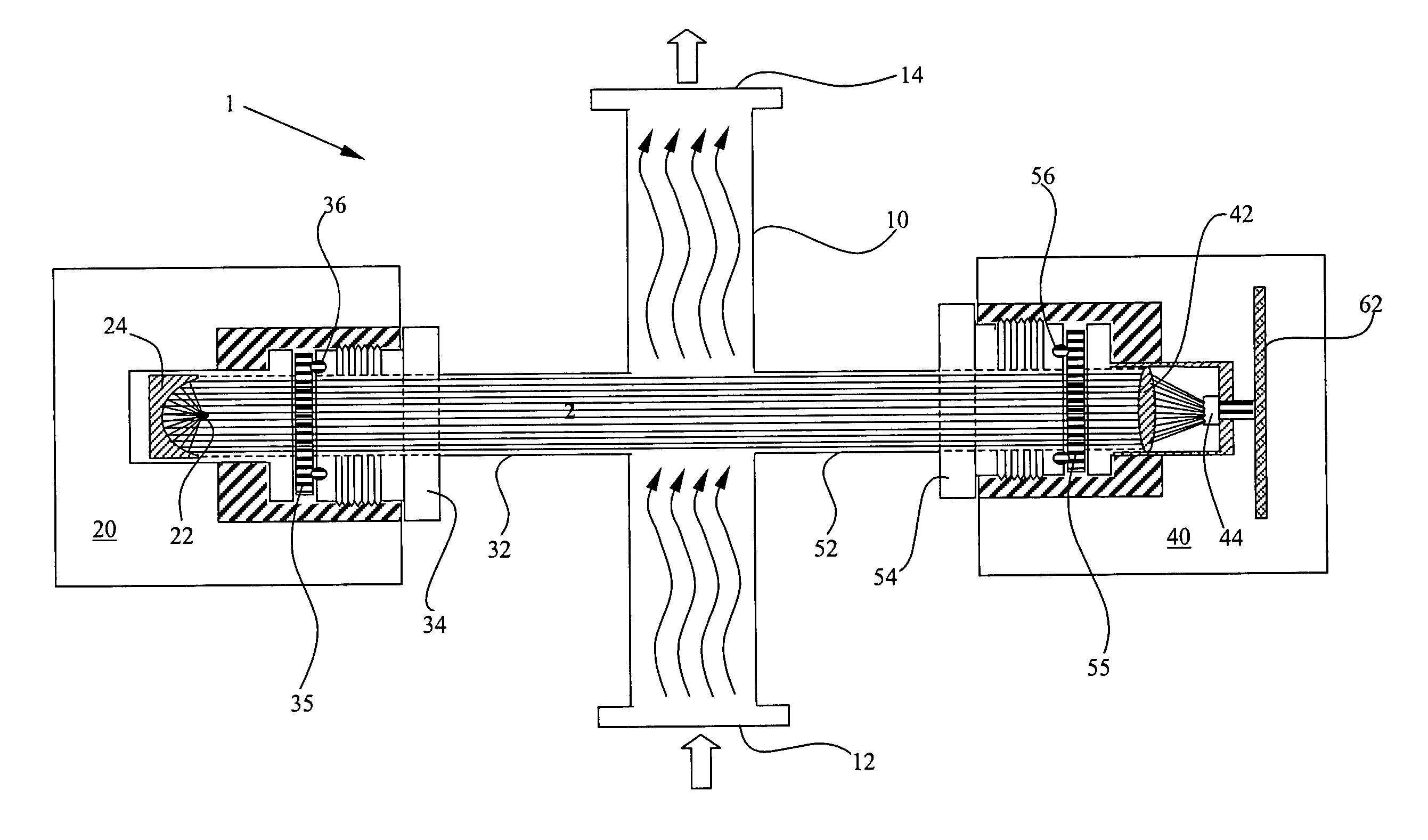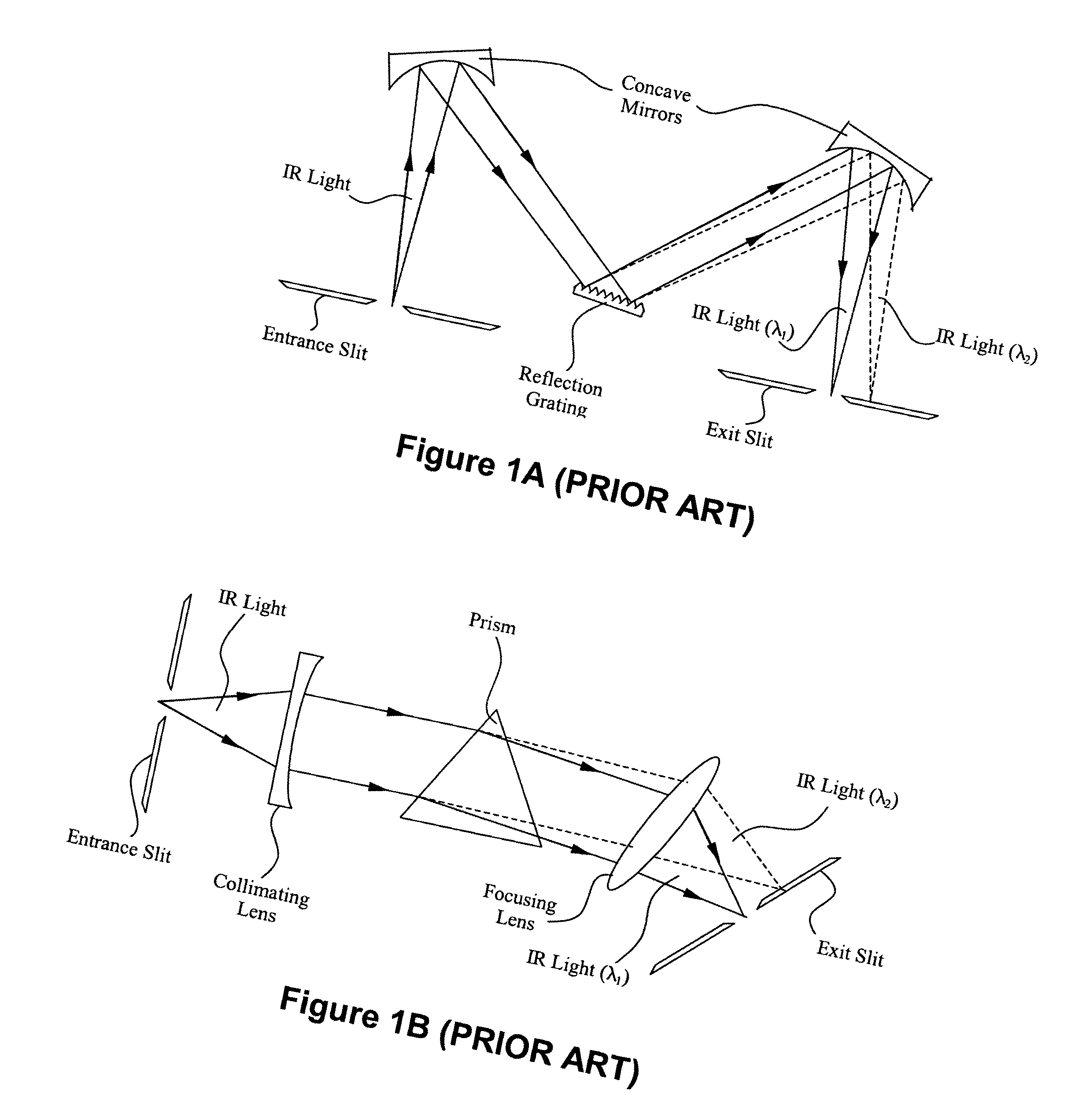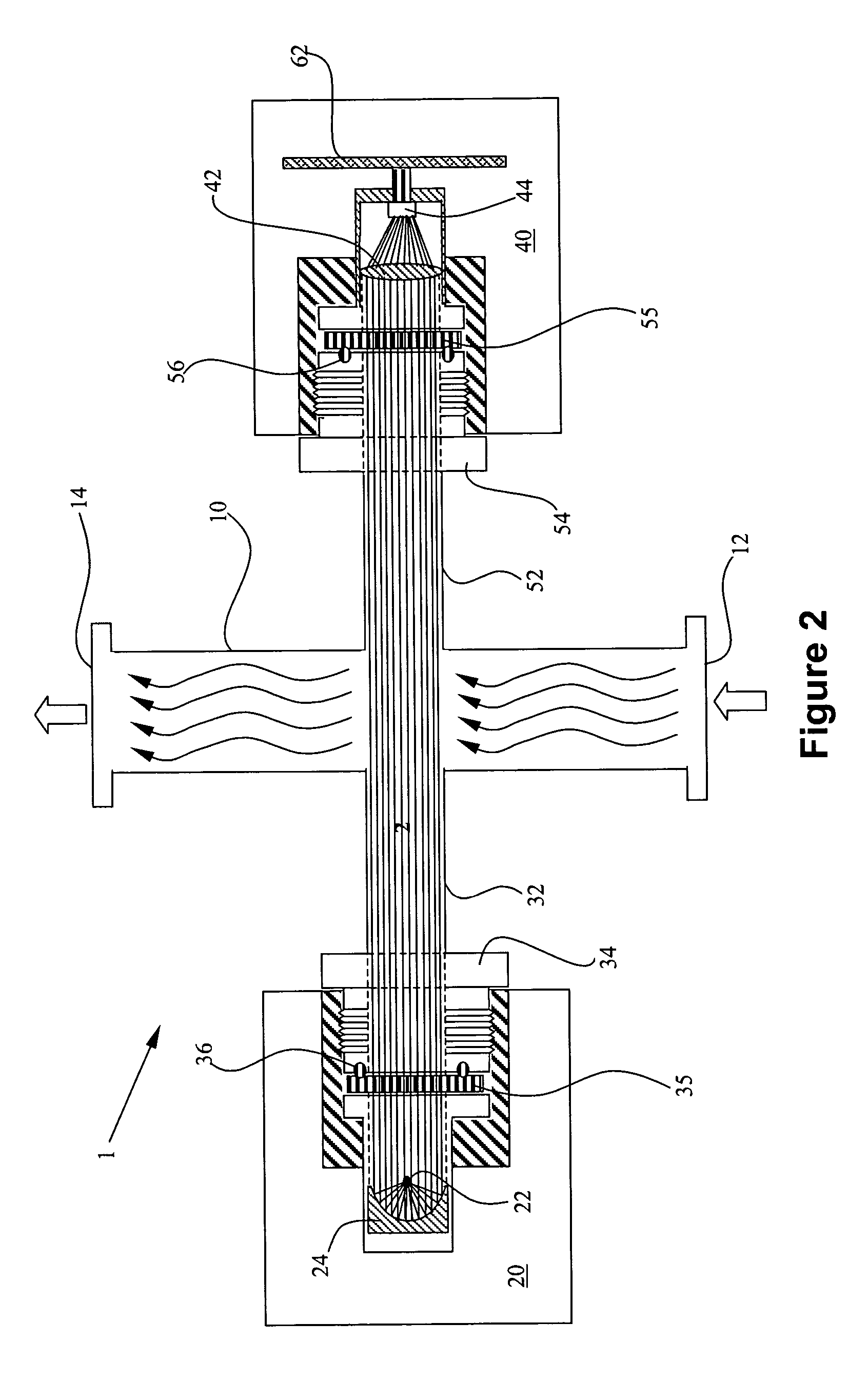Monitoring system comprising infrared thermopile detetor
a technology of infrared thermopile detector and monitoring system, which is applied in the direction of instruments, semiconductor/solid-state device details, optical radiation measurement, etc., can solve the problems of loss of radiation intensity, risk of total system failure, cost and complexity of spectrometer apparatus, etc., and achieve the effect of reducing the amount of ir radiation transmitted and reducing the amount of particle deposits
- Summary
- Abstract
- Description
- Claims
- Application Information
AI Technical Summary
Benefits of technology
Problems solved by technology
Method used
Image
Examples
Embodiment Construction
[0030] The present invention provides infrared thermopile detector systems useful for semiconductor process monitoring and control. U.S. patent application Ser. No. 10 / 140,848 filed on May 8, 2002 in the name of Jose I. Arno is incorporated herein by reference in its entirety for all purposes.
[0031] As used herein, the term "semiconductor process" is intended to be broadly construed to include any and all processing and unit operations involved in the manufacture of semiconductor products, as well as all operations involving treatment or processing of materials used in or produced by a semiconductor manufacturing facility, as well as all operations carried out in connection with the semiconductor manufacturing facility not involving active manufacturing (examples include conditioning of process equipment, purging of chemical delivery lines in preparation for operation, etch cleaning of process tool chambers, abatement of toxic or hazardous gases from effluents produced by the semico...
PUM
| Property | Measurement | Unit |
|---|---|---|
| Ra | aaaaa | aaaaa |
| Ra | aaaaa | aaaaa |
| Ra | aaaaa | aaaaa |
Abstract
Description
Claims
Application Information
 Login to View More
Login to View More - R&D
- Intellectual Property
- Life Sciences
- Materials
- Tech Scout
- Unparalleled Data Quality
- Higher Quality Content
- 60% Fewer Hallucinations
Browse by: Latest US Patents, China's latest patents, Technical Efficacy Thesaurus, Application Domain, Technology Topic, Popular Technical Reports.
© 2025 PatSnap. All rights reserved.Legal|Privacy policy|Modern Slavery Act Transparency Statement|Sitemap|About US| Contact US: help@patsnap.com



